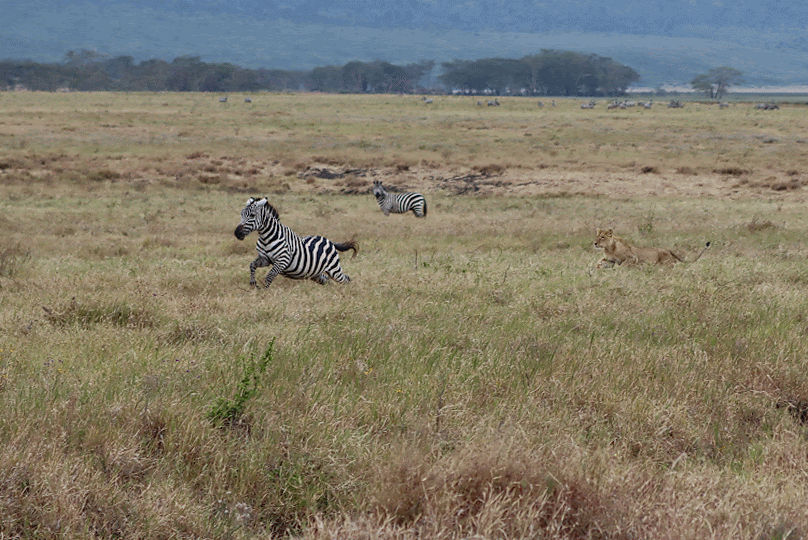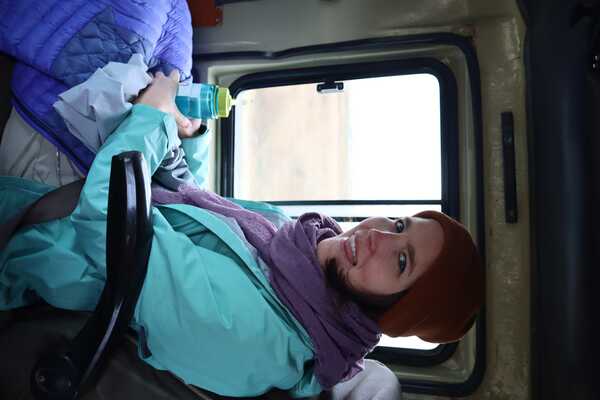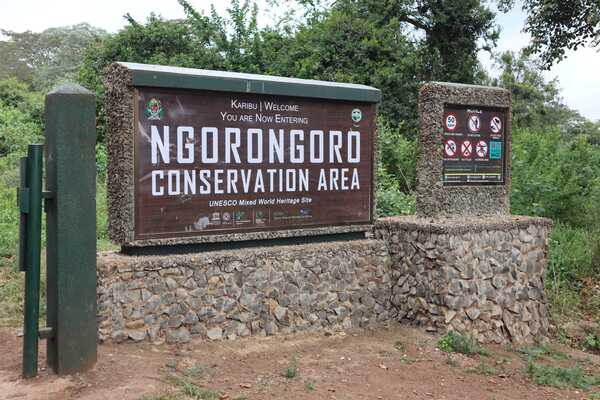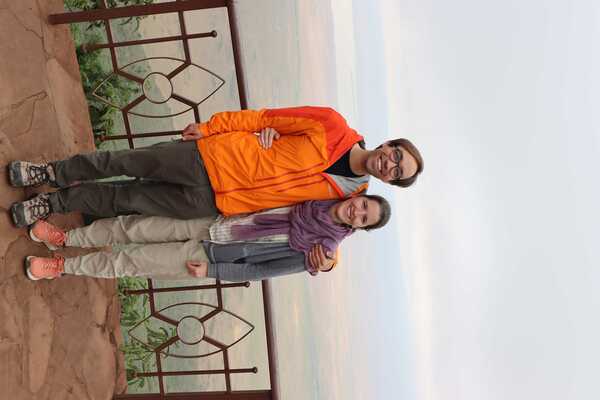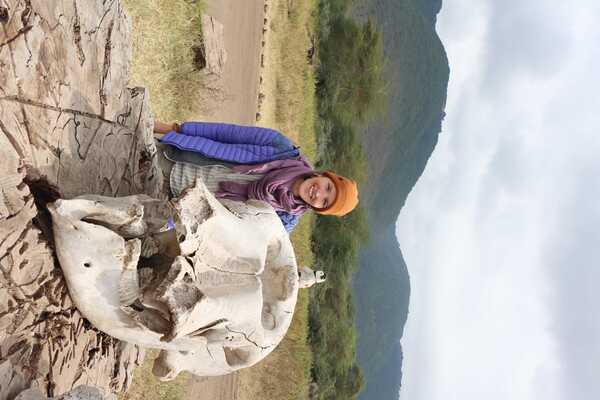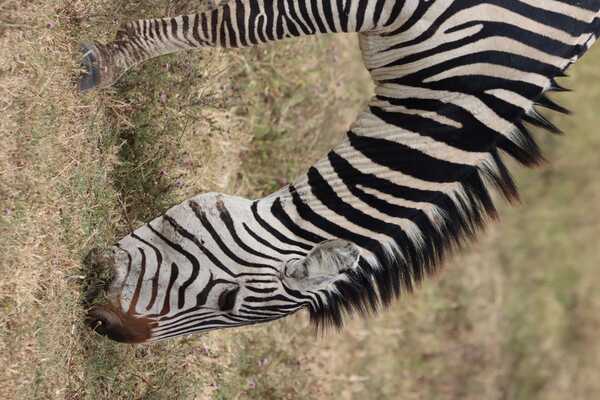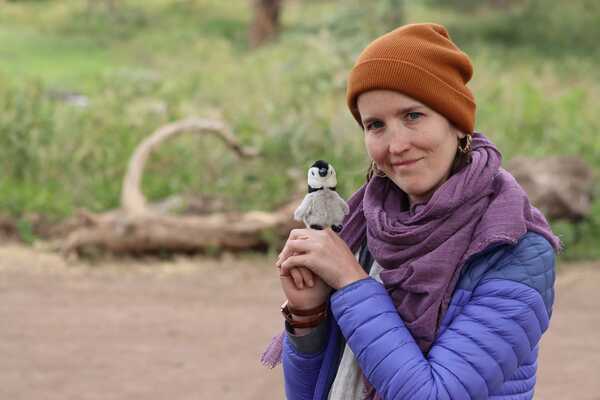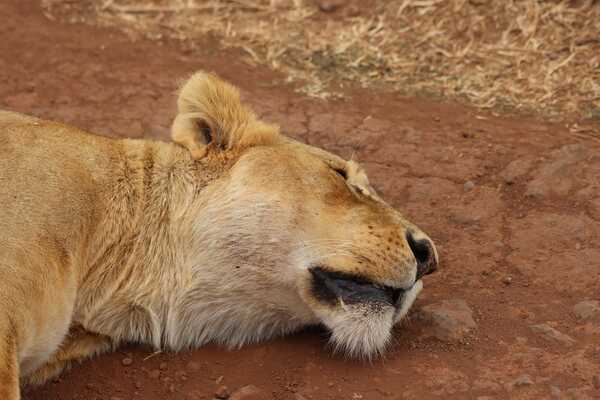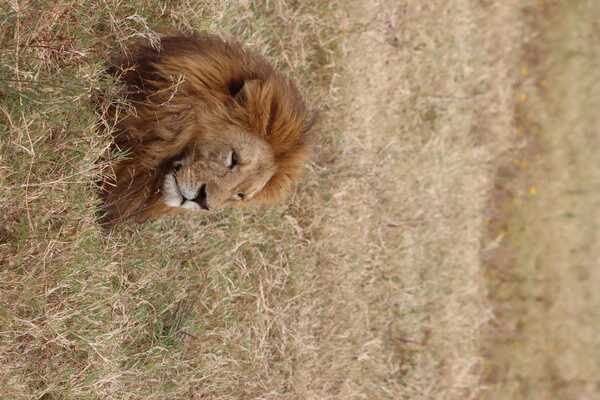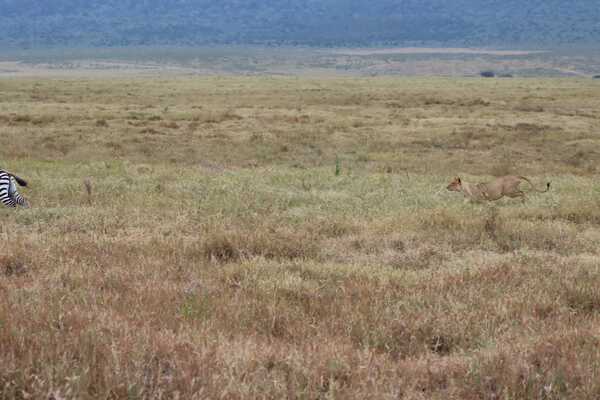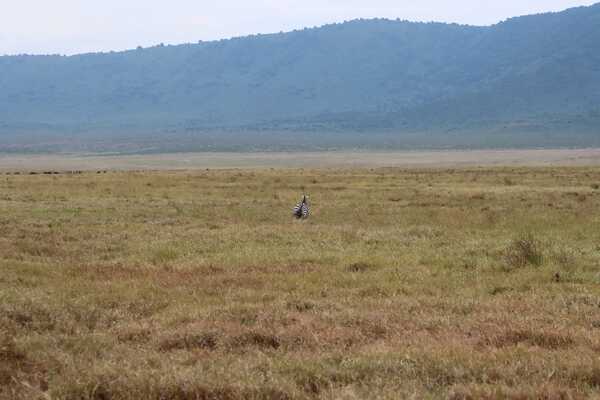Ngorongoro Crater
Ngorongoro Crater was a spectacular way to start our safari, our first day of a 10-day safari adventure. Honest, our guide, picked us up bright and early at Rivertrees on Saturday, June 25. We made the drive to Arusha town (downtown) in the huge Toyota land cruiser. At the time, it felt silly having such a big vehicle for just the two of us. However, as the safari progressed we loved having the space. We would actively jump between seats to get a better angle in pursuit of the best view or photo.

On the way, we got to learn more about Tanzanian’s first president Julius Nyerere and current president Samia Suluhu Hassan. When we arrived in Arusha town, the central downtown area, we picked up Benedict, the cook, and he quickly filled the vehicle with food, kitchen supplies, and our tenting gear for the planned hike. We then drove the 3 hours to the crater.

Ngorongoro used to be part of the larger Serengeti National Park and sits adjacent to it. However, due to friction between the local tribe, the Maasai, and the Tanzanian federal government, the land was transitioned into a conservation area. This allows parts of it to be used for their traditional hunting for sustenance, while the craters and specific areas are used for tourism.
[map of Ngorongoro and Serengeti - https://www.researchgate.net/figure/Map-of-Serengeti-ecosystem-showing-the-Serengeti-National-Park-Ngorongoro-Conservation_fig1_259936028 or https://www.africanworldheritagesites.org/assets/files/Maps_and_Satellite_Images_of_Ngorongoro_Conservation_Area.pdf]
Entering the Park
Arriving at Ngorongoro Crater feels like entering Jurassic Park from the movie. To get into the park, we drove under a massive gate with huge doors, which closes at 6 pm sharp. (Sadly we didn’t get a photo). From the gate, we ascended the side of the mountain with the crater for about 30 minutes. As we ascended we could see less and less as we entered a layer of fog. Our guide explained that the crater was formed from a volcanic mountain in which the peak had collapsed leaving this crater. And that due to its topography and elevation the rim of the crater is very cold and is often covered in fog. As we climbed up the mountain’s side to the crater rim, the weather changed intensely. We took a quick stop at a vista for a photo and to admire the many herds of wildebeest, buffalo, and zebra.
Descending the Crater Walls
From the vista, we started our descent into the crater center for another 30-minute drive. And this is when the Jurassic Park vibes really amplified. The wall of the crater formed this natural wall that stretched across the horizon. The fog added an additional layer making the natural wall appear so tall that they were lost in the clouds. Our guide informed us that the crater was home to roughly 25,000 resident animals.
Once we had gotten down the crater wall, we were met by a group of buffalo. Our first animal interaction and one of the big five down. The “big five” are the top five animals that big game hunters used to seek for bringing home trophy busts. The concept has now translated to the “big five” for safari tourists, just looking at the animals. We watched the buffalo for a few minutes and they clearly watched us back. As we sat there we were able to watch several oxpeckers land on the buffalo and graze on their hides. Oxpeckers are birds who exclusively live on large game, eating the bugs from their hides. Big game (buffalo, wildebeest, giraffes, etc.) like this because it removes insects. For us, it was cool to see birds just hanging out on these large animals, walking around calmly even as the larger animals moved.
At this point, our stomachs started rumbling for some lunch so Honest drove us to a picnic area nearby. On the way, we made a quick detour to observe a male ostrich. We ended up eating our lunch right next to an elephant skull and were joined by some Superb Starlings, brightly-colored birds after our food. After eating the boxed lunches, we dipped into some of the snacks we brought from Amsterdam - and found some Baklava. We had gotten it from a Turkish grocer in Amsterdam. Neither Honest nor Benedict had ever had Baklava, so we shared some. It took a little encouragement to get them to try it, but they also loved it.
The Forest
After lunch, we drove through a small patch of forest in the crater and passed within feet of two groups of elephants - now completing two of the big five. In both groups, they were eating leaves and slowly moving towards the road. It was clear that there were pairs of parent/children and the adults were monitoring the babies in both groups. In the second group, we got to watch a baby elephant scratch an itch behind its head with a tree no more than 4 meters from the truck. As we were watching the baby elephant, the second group crossed the road behind us.
Within minutes of seeing the elephants, our guide pointed out a group of guineafowls. According to our guide, some locals in Tanzania keep guineafowl. He also shared that the birds (along with their eggs) have a superior taste to chicken.

The Leopard
As we continued to drive in the forest while driving 20+ miles per hour, Honest spotted a leopard way in the distance which was almost completely obscured by branches. He abruptly stopped the car, backed it up slightly, and grabbed his binoculars to stare at a group of trees. Then he exclaimed, “there’s a leopard there!” Even after we stopped and he directed us to where it was, we could barely make it out in our binoculars. We still have no idea how he managed to see it. Using the in-car radio system, Honest informed the other guides in the crater of the leopard’s presence and cars just started appearing out of nowhere. It is incredibly rare to spot a leopard in Ngorongoro, as they are very good at hiding. At this moment we knew we had a fantastic guide.
We were completely blown away by our experiences so far. We had only spent about 3 hours in the park and had already seen three of the “big five”. We started joking that we didn’t even need the ten days of the safari. We would be able to see the “big five” in one day and then go home.

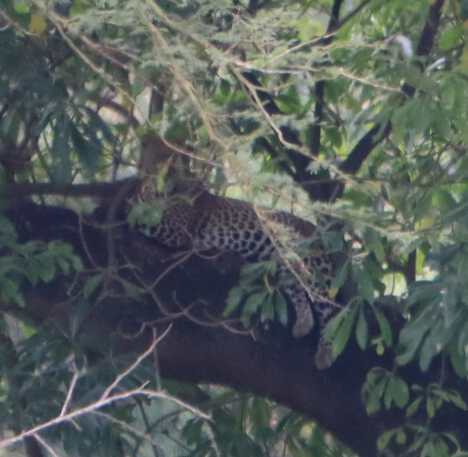
After the leopard, our day continued to be exciting. For the first time, we saw zebra, wildebeest, gazelle, hippos, flamingos, warthogs, kori bustard, and hyenas in the wild. The hyena photographed below got so close to the car that if we had opened the door we could have given it a pet! Overall, it felt surreal to see these animals in their natural surroundings, a first for both of us. It was clear that they had family structures, emotions, habits, and so much more - just like humans. Katherine said that it felt so normal to watch these beautiful animals. And at the same time very surreal as if what we were seeing was only meant to be seen in a nature documentary.
The Lions
It was now close to the park’s closing time and we were on the opposite side of the park from where we needed to be to get to our hotel. We had to make it to the other side before the gate closed at 6 pm. Honest was listening to the radio (all in Swahili) as we were driving around and (unbeknownst to us) someone called in a lion sighting. We were driving quickly on the dirt roads and suddenly we came upon 4 other safari trucks parked on the road. We stood up and there was a lioness sleeping right outside the car - in the middle of the road. We were ecstatic! And then Honest pointed out that a male lion was sleeping to the left. They seemed completely unperturbed by our presence and all the noise we made. These two had been mating (which takes several days) and were taking a nap. If humans stay in the safari cars, then animals feel comfortable and safe because it is an indicator that we are not hunters or poachers (who frequently approach them by foot). These two lions were literally sleeping, clearly feeling safe.
At this point, we were so happy with the day. We had seen so much, had so many new experiences, and felt like it could not get better. We were getting quite close to closing time and started driving towards the exit even faster than before. This time we were accompanied by the other safari trucks staying late to admire the lions. The roads are all dirt and quite bumpy so we had to hang on tight as we were jostled around. Up to this point whenever we would ford a river, drive over a particularly large bump or similarly sketchy activity. Honest would exclaim, “Adventure!”. This drive back was quite the adventure!

The Hunt
While on our way to the gate, we passed two lionesses actively hunting a zebra next to the road! Even with our time crunch, we stopped to watch the exchange. Generally, lionesses live together - raising the young, hunting together, and being a family unit. They need to carefully hunt and quietly approach the zebra. Zebras can outrun lions, and lions only have short bursts of energy to hunt - meaning that about 30% of their attempted hunts are successful.
In this case, the zebra managed to get away and we managed to get out of the park at 5:55 pm. Right before the gate closed! With the lions, we saw FOUR of the “big five” today. The only animal we did not get to see was the black rhino, which is incredibly rare. There are less than 200 in the entire country of Tanzania. Almost in irony, we slept at the Rhino lodge that night. Overall, we had an amazing day and could not have asked for a better start to our safari!
